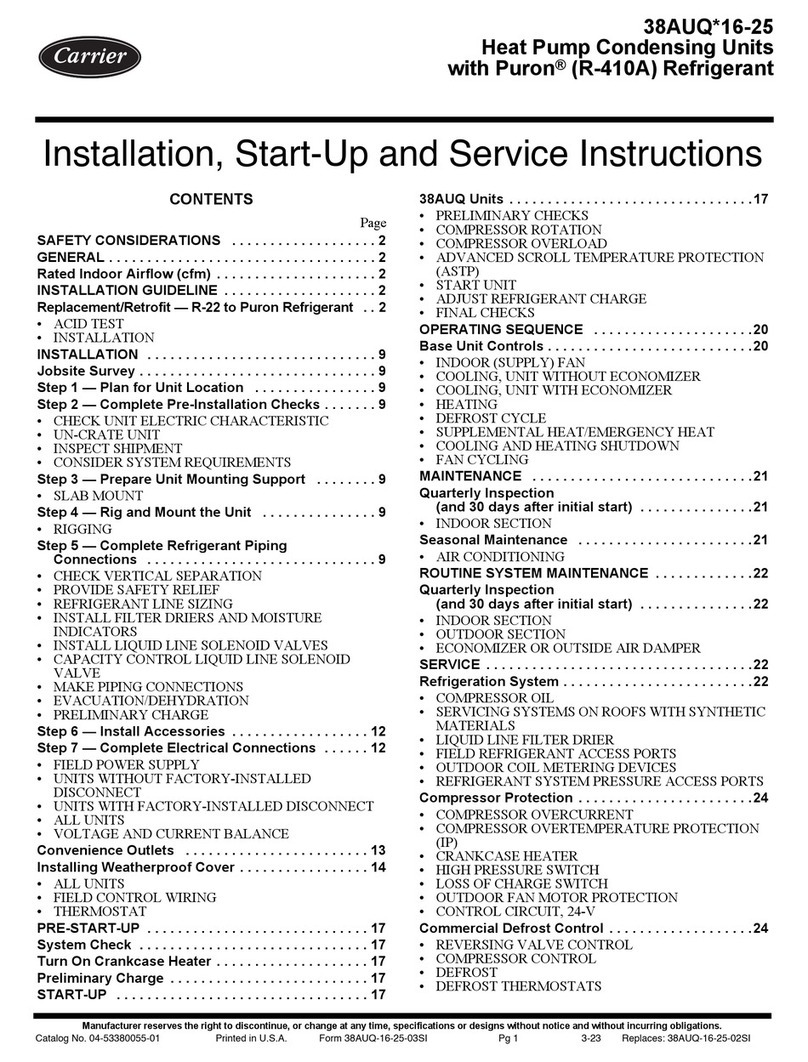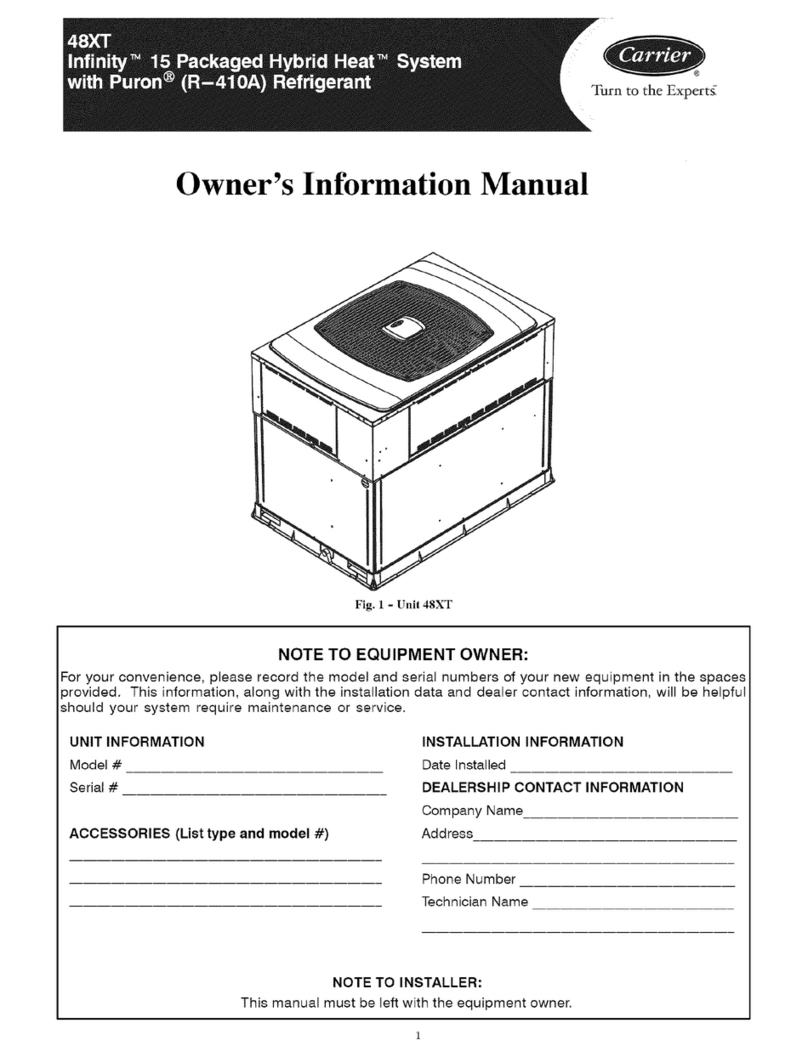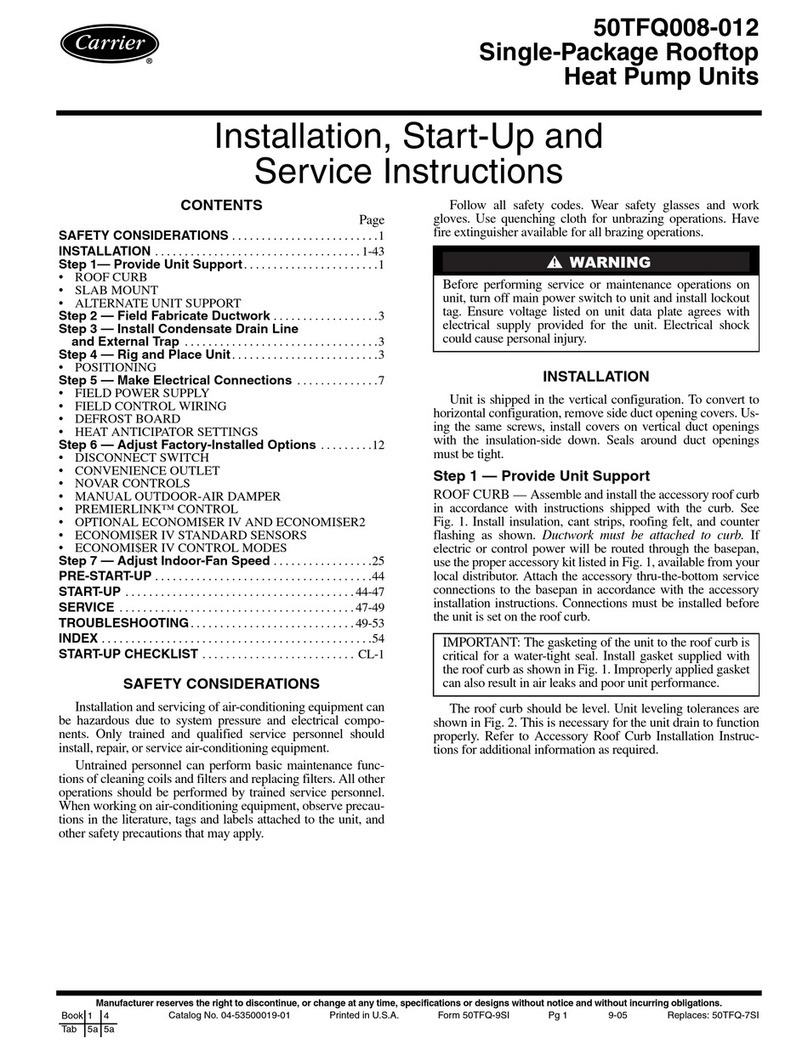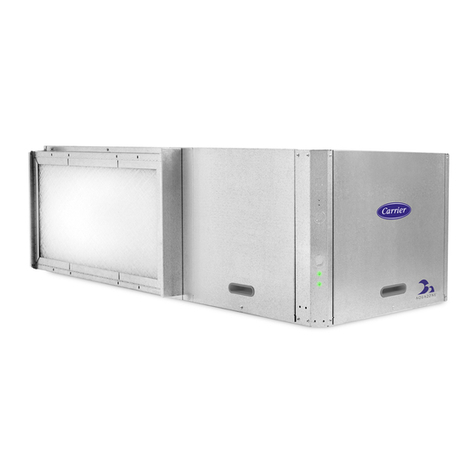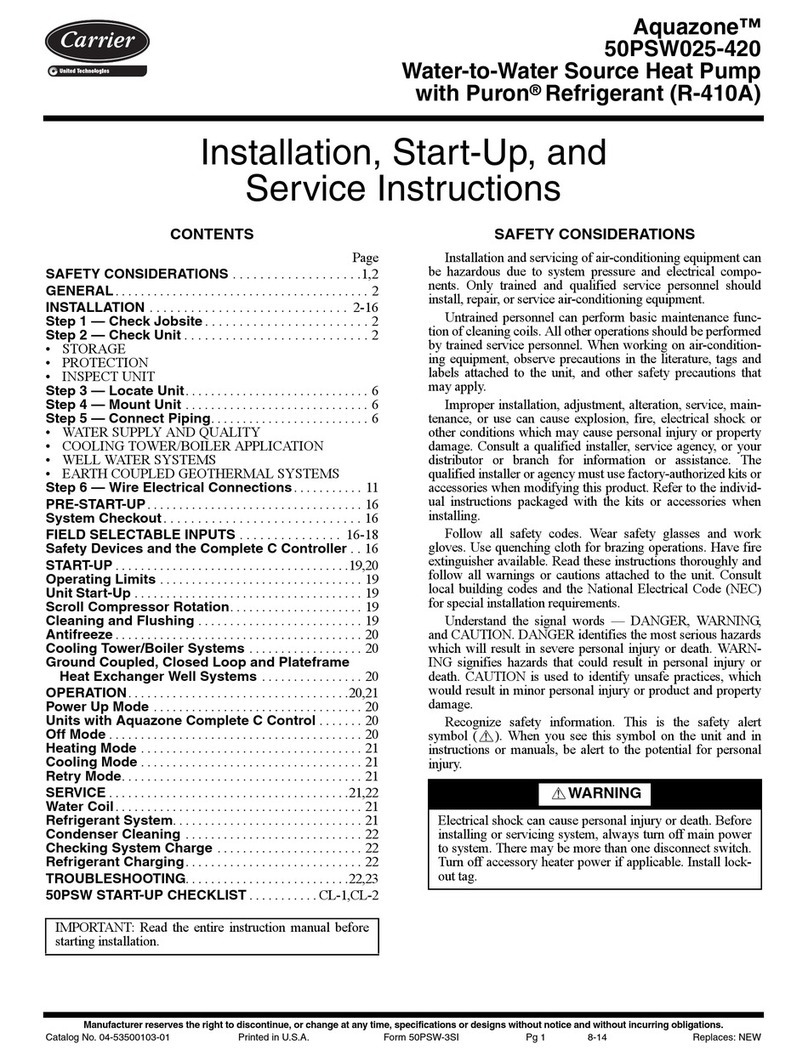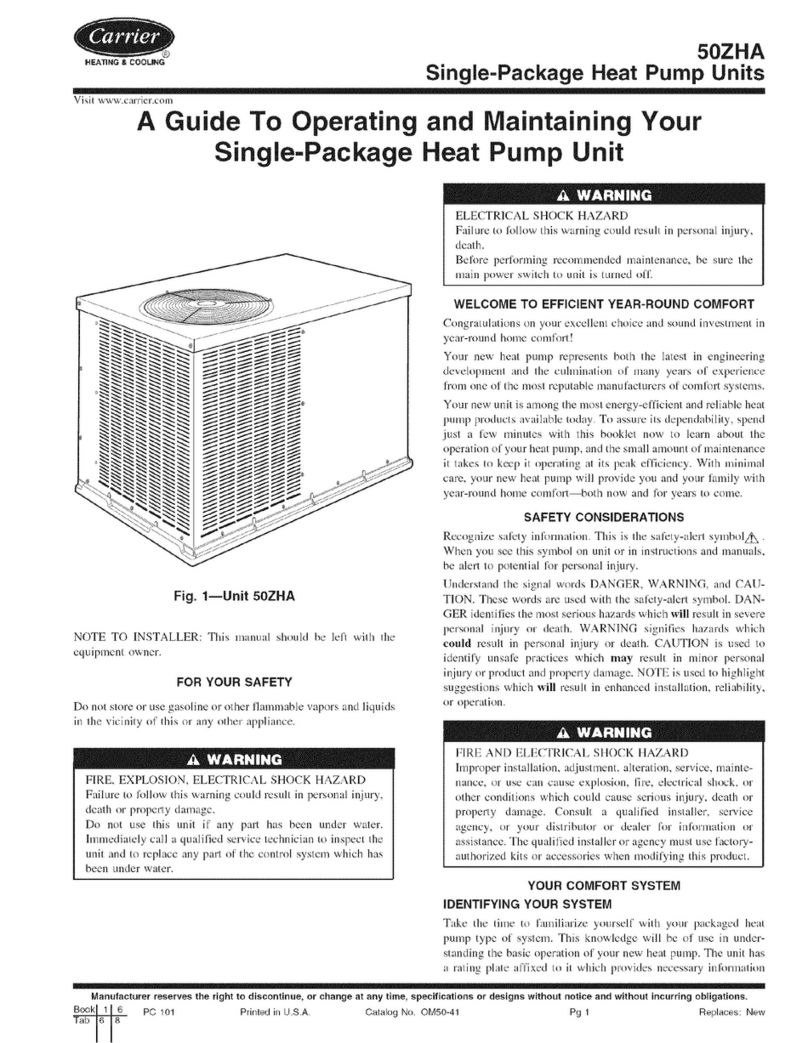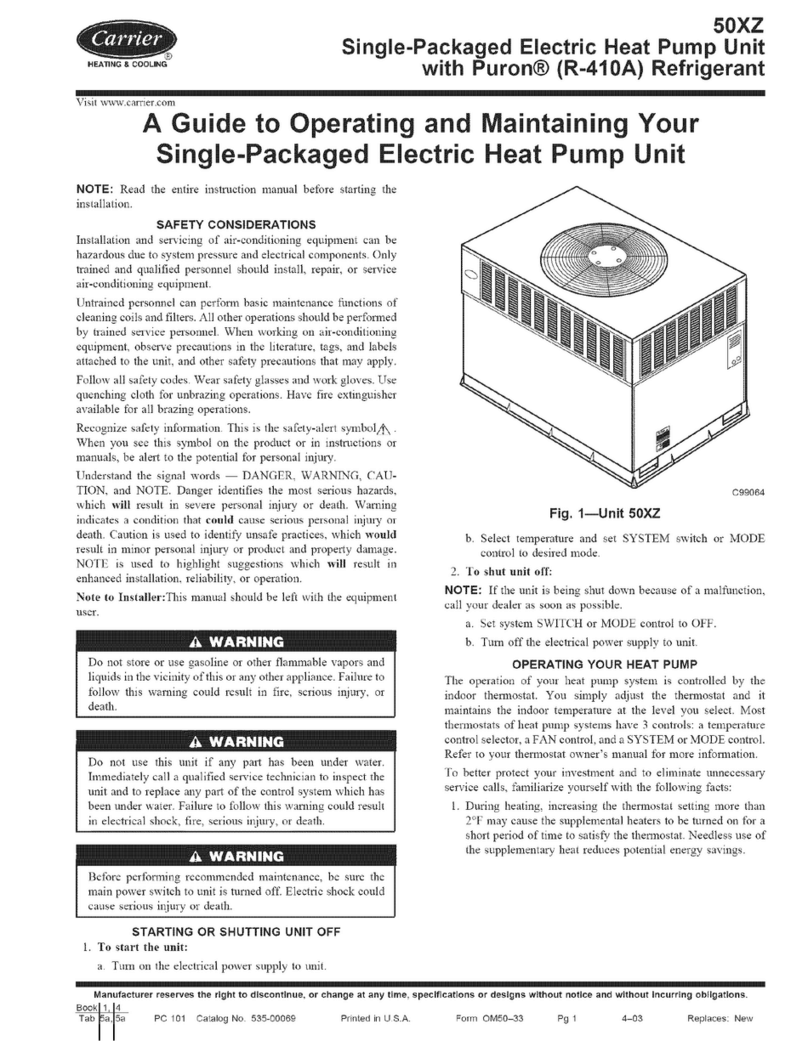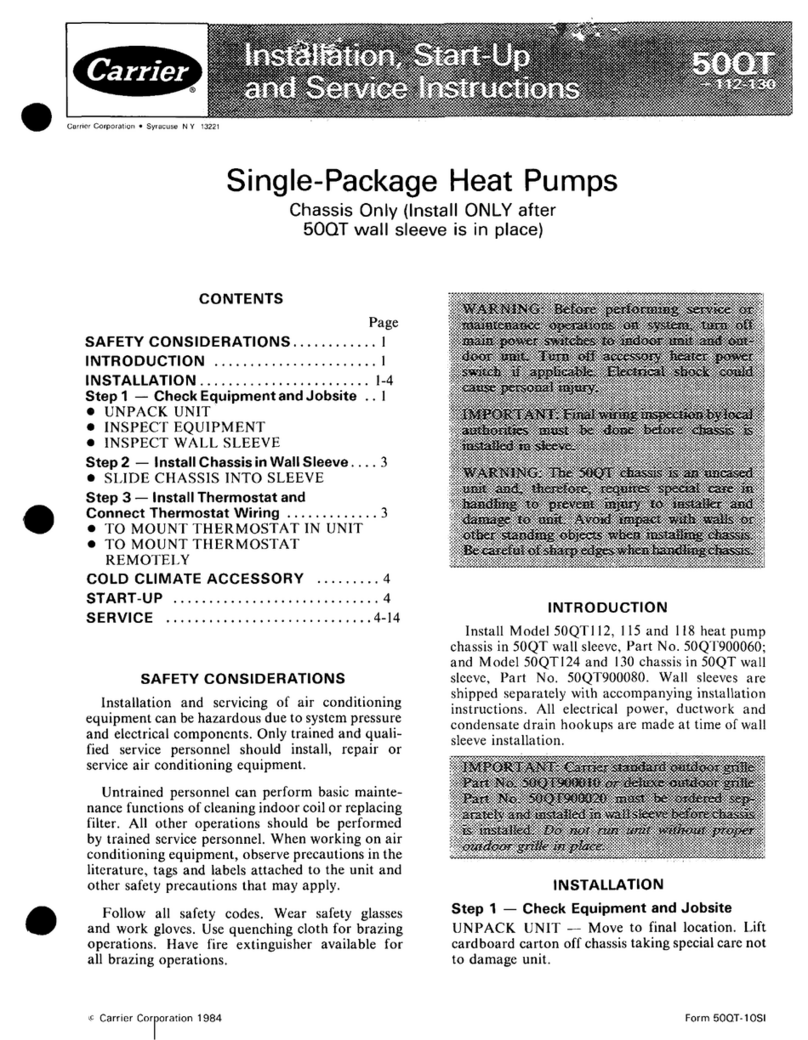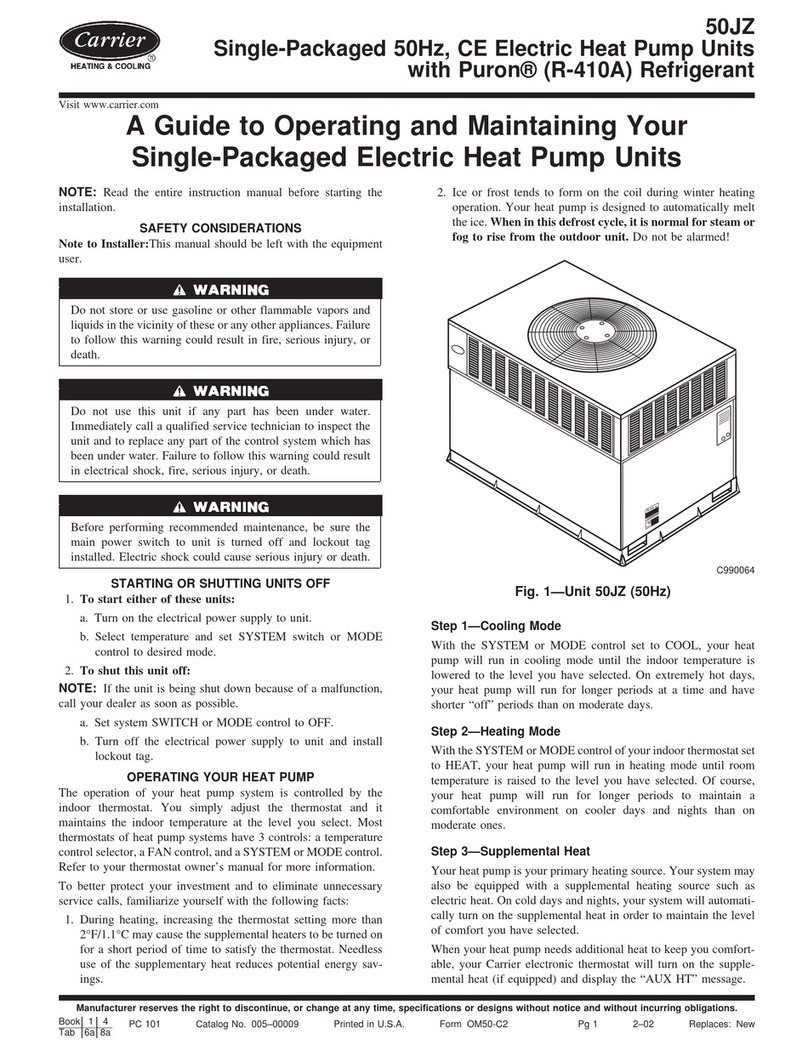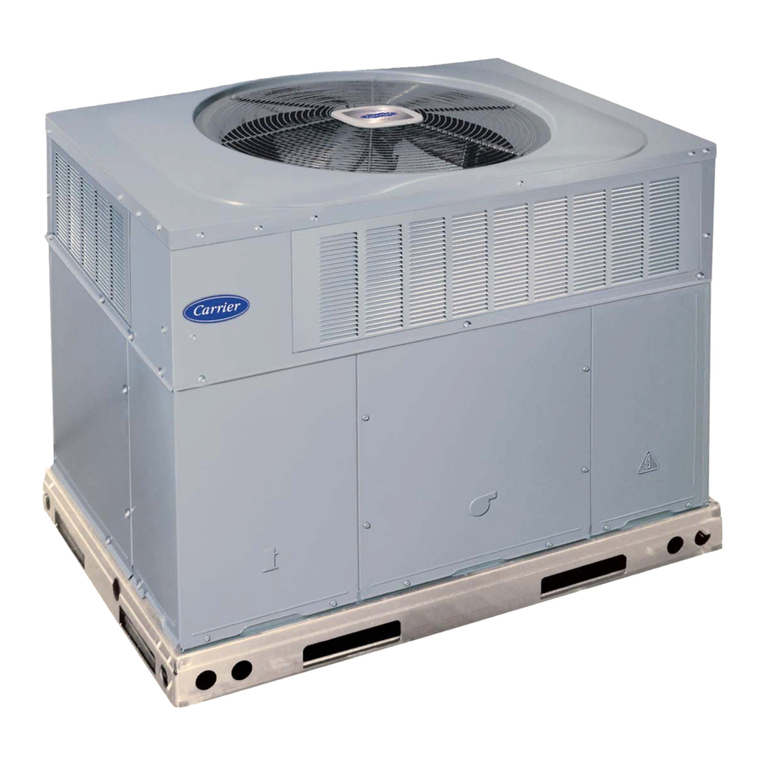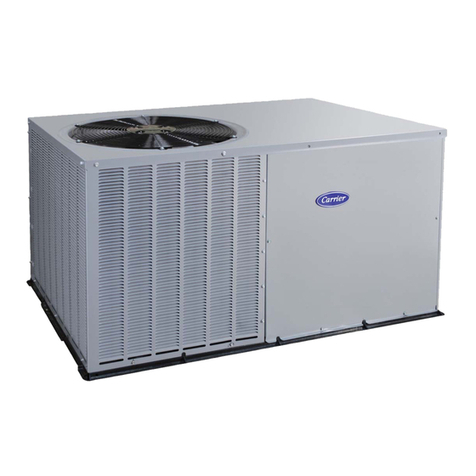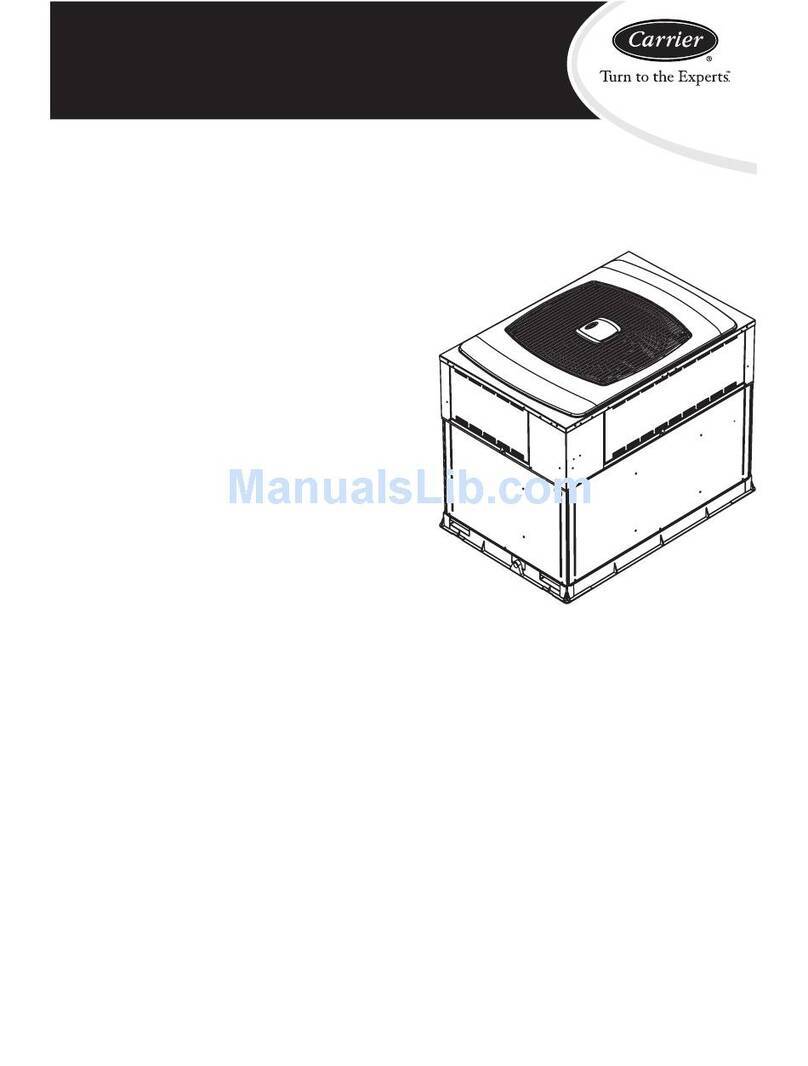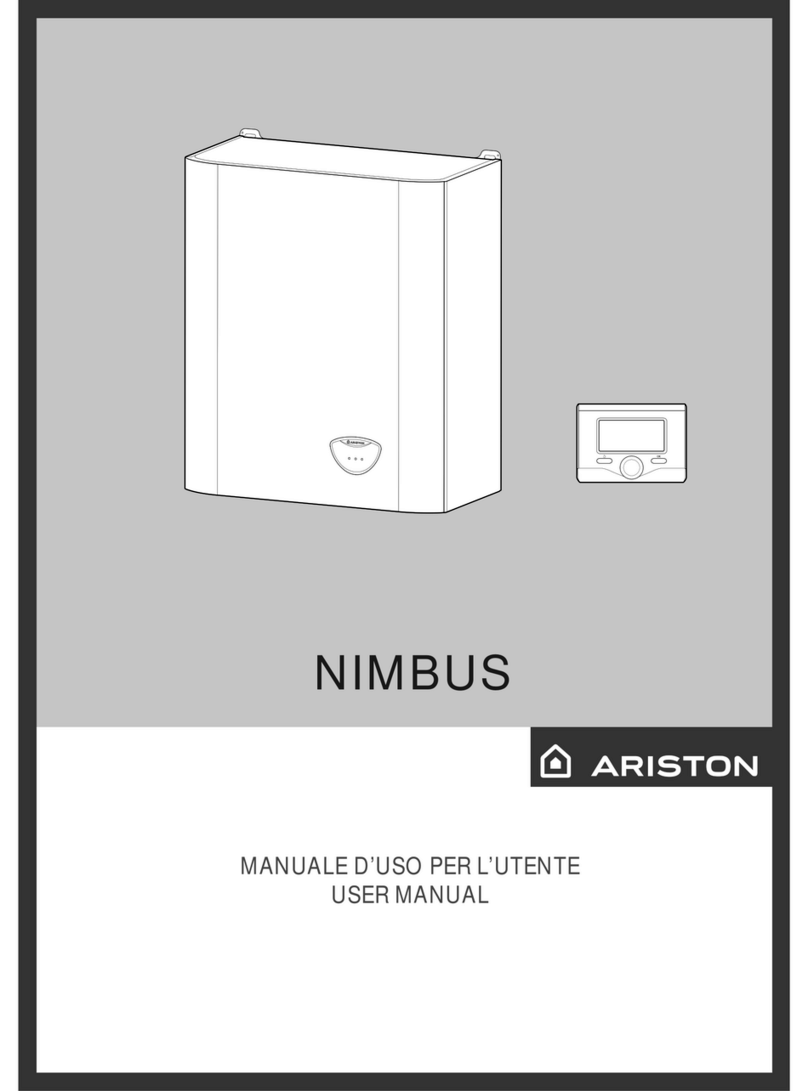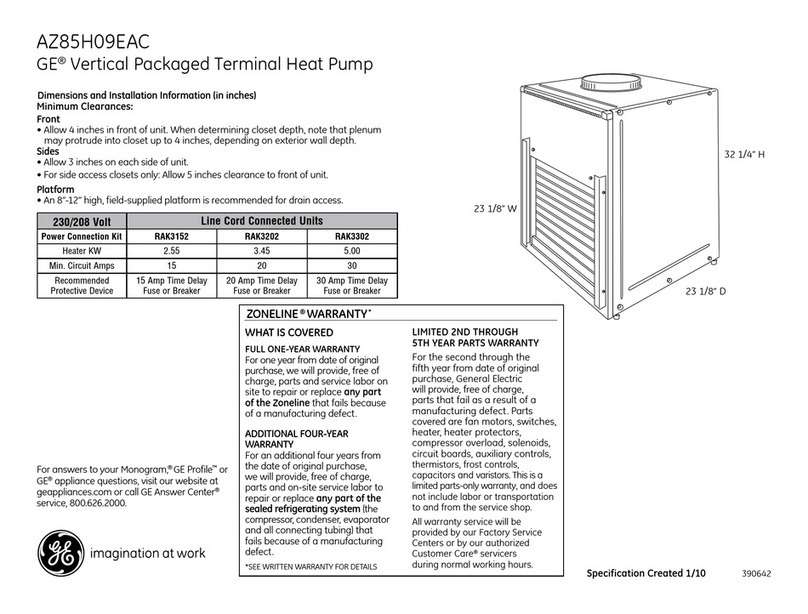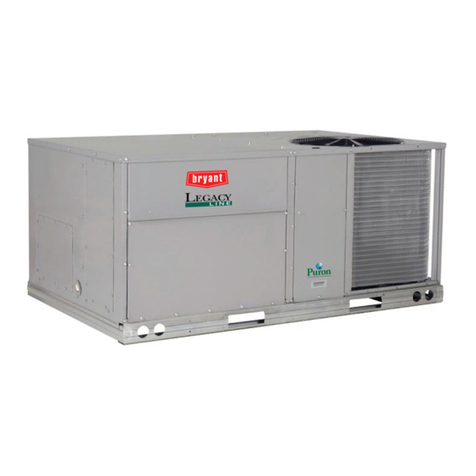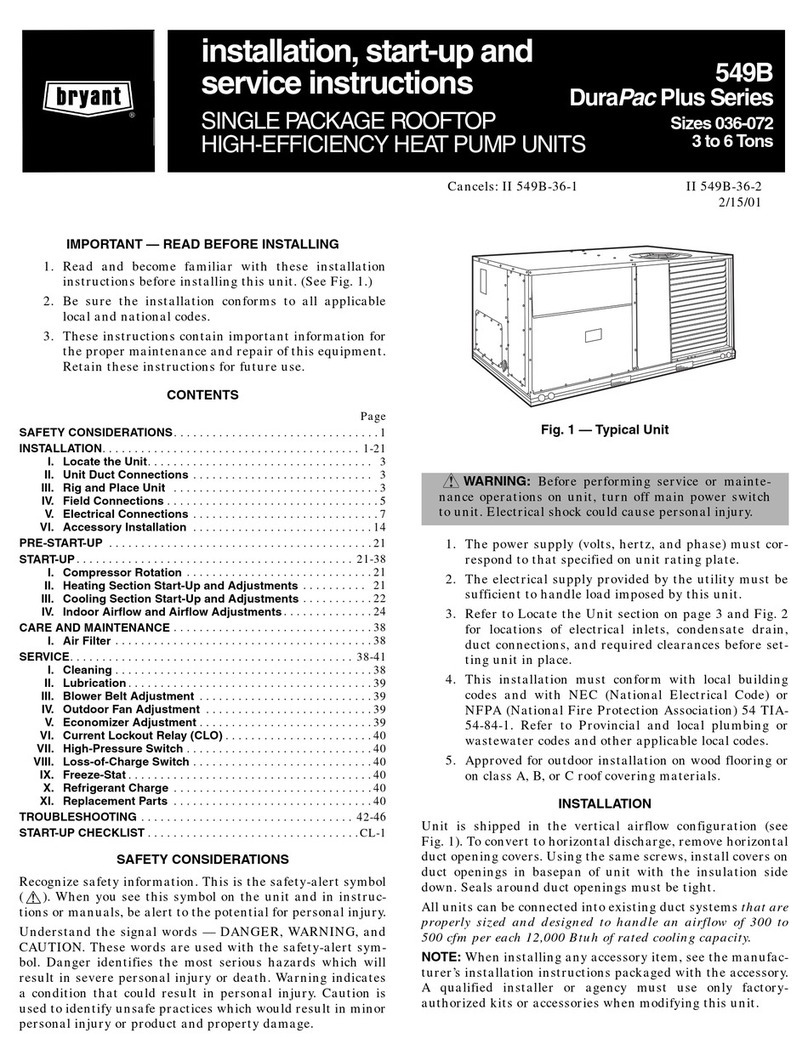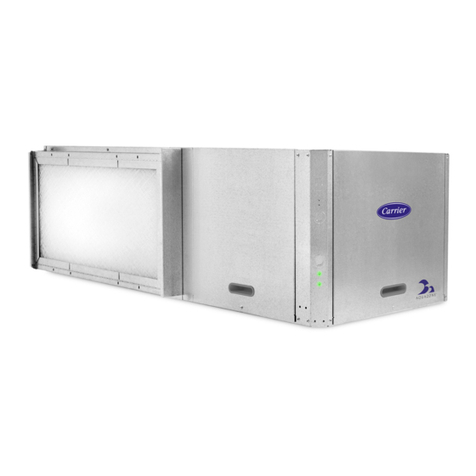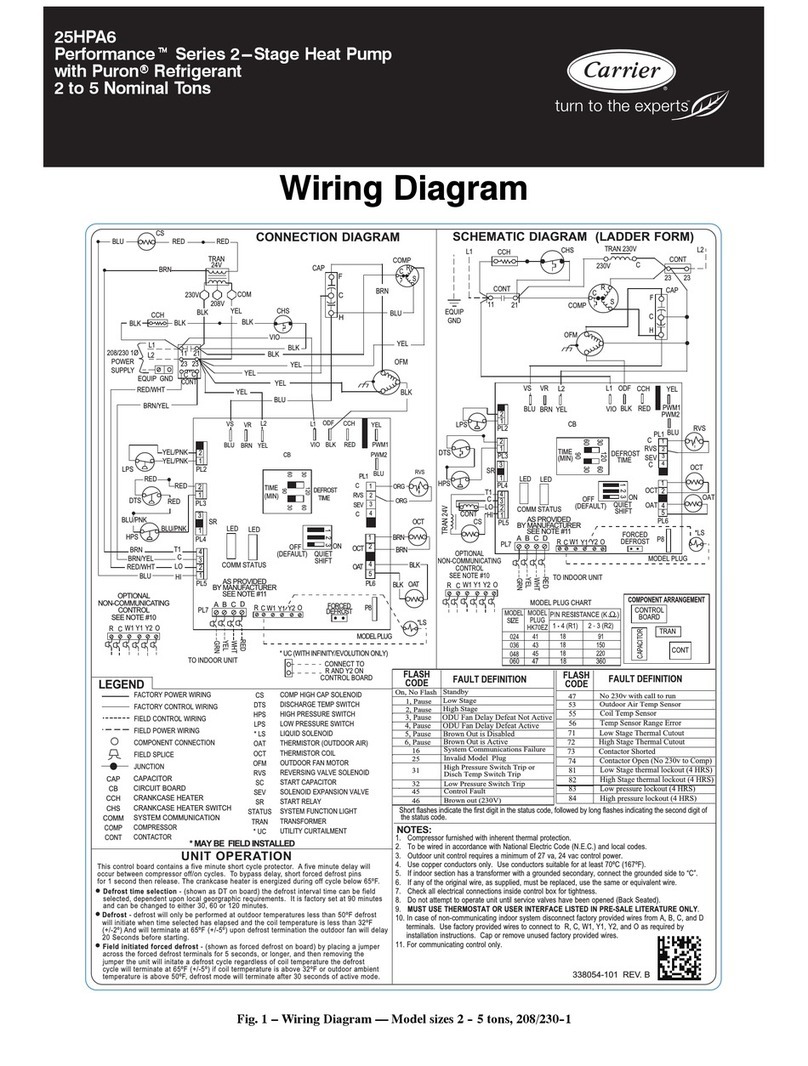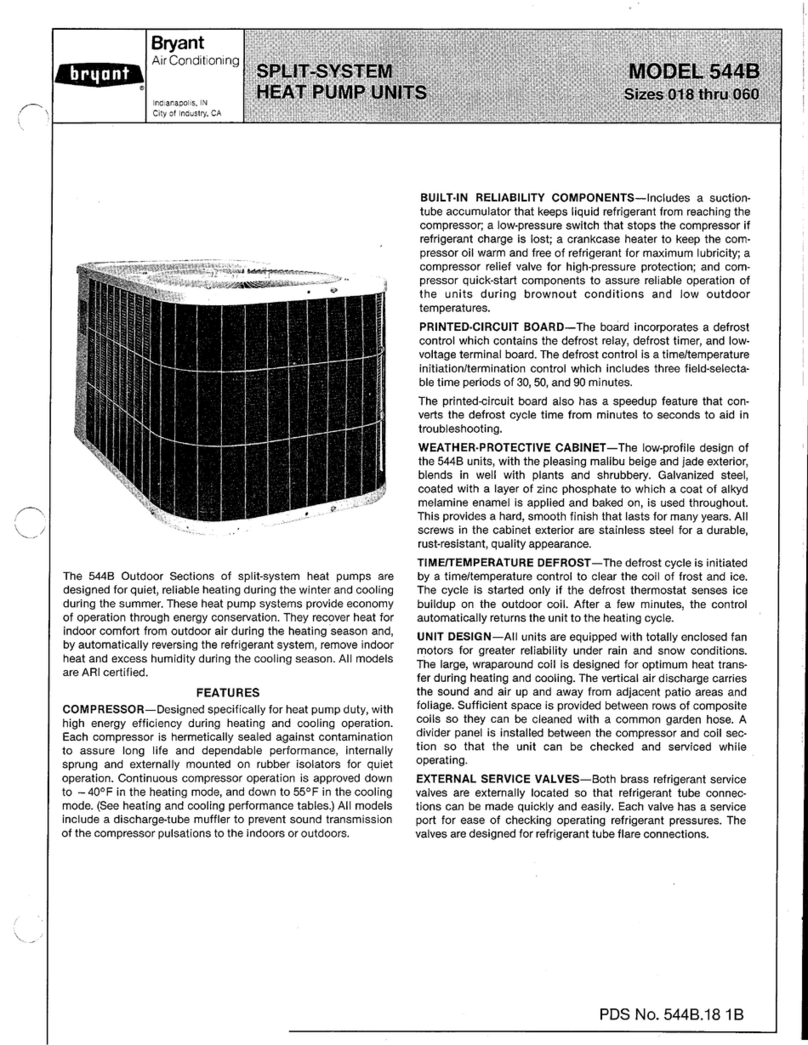• During the heating cycle, air from your registers may seem
cooler than you might first expect. This is because your heat
pump delivers a constant flow of air at around 90°F to 105°F
instead of in sudden bursts of hot air as with a conventional
furnace. This air may feel cool because it is slightly less than
your skin temperature. However, it is sufficiently warm to
keep you coml\wtable.
• Ice or frost will tend to form on the outdoor coil during the win-
ter heating operation. Your heat pump is designed to automatical-
ly melt the ice. When in this defrost cycle, it is normal for steam
or I\_gto rise from the outdoor unit. Do not be alarmed?
• Do not operate your unit in cooling mode when outdoor
temperatures are below 55°F unless your unit was modified
l\_rlow-ambient operation.
• Do not operate your unit in heating mode when outdoor
temperatures are above 66°F unless you set your thermostat
to emergency heat mode.
OPERATING YOUR HEAT PUMP
The operation of your heat pump system is controlled by the
indoor thermostat. You simply adjust the thermostat and it
maintains the indoor temperature at the level you select. Most
thermostats l\w heat pump systems have three controls: a tem-
perature control selector, a FAN control, and a SYSTEM or
MODE control.
The FAN control offel.Stwo options for controlling the indoor
blower: AUTO and ON. When set to AUTO, the blower l-unsonly
when the heat pump is operating. When set to ON, the Nower l'uns
continuously.
Typically, the SYSTEM or MODE control on your thermostat
offers the l\_llowing selections: COOL, OFE HEAT, AUTO,
and EMERGENCY HEAT. Some thermostats may have a sep-
arate switch t\_rEMERGENCY HEAT. The heat pump will not
operate when the SYSTEM OR MODE control is set to OFF.
With the SYSTEM or MODE control set to COOL, your heat
pump will provide cooling when the indoor temperature rises
above the level you wish to maintain. With the SYSTEM or
MODE control set to HEAT. your heat pump will provide
warmth whenever the indoor temperature falls below the level
that you have selected.
The AUTO selection t\mnd on some thermostats provides l\_r
automatic changeover between cooling and heating. With the
SYSTEM or MODE control set toAUTO, cooling operation is
activated when the indoor temperature rises above the thermo-
stat cooling temperature setting, or heating operation is acti-
vated when the indoor temperature drops below the thermostat
heating setting.
Depending on your typical winter heating needs, your home
comt\wt system may include a supplementary heating source.
The EMERGENCY HEAT setting (EHEAT) provides l\_r con-
venient selection between the two heating appliances. Your
heat pump will operate when the SYSTEM or MODE control
is set to HEAT. With the SYSTEM or MODE control set to
EHEAT. the heat pump will turn off and the supplementary
heat source will be activated.
In certain geographic areas and in certain applications, supple-
mental heat is not required. Any questions regarding your
application should be directed to your dealel;
COOLING MODE
When operating in cooling mode, yonr heat pump will run in
cooling mode until the indoor temperature is lowered to the
level you have selected. On extremely hot days, your heat
pump will run for longer periods at a time and have shorter
"oW' periods than on moderate days.
The t\_llowing are typical conditions that add extra heat and/or
humidity to your home. Your heat pump will work longer to
keep your home coml\wtable under these conditions:
• Entrance doors are frequently opened and closed
• Laundry appliances are being operated
• A shower is running
• More than the usual number of people are present in the home
• More than the normal number of electric lights are in use
• Drapes are open on the sunny side of the home
HEATING MODE
With the SYSTEM or MODE control of your indoor thermo-
stat set to HEAT, your heat pump will run in heating mode until
room temperature is raised to the level you have selected. Of
course, your heat pump will have to operate l\_r longer periods
to maintain a comt\mable environment on cooler days and
nights than on moderate ones.
SUPPLEMENTAL HEAT
Your heat pump is your prili'lary heating source. Y_our system
may also be equipped with a supplemental heating source such
as electric, gas, or oil. On cold days and nights, your system
will automatically turn on the supplemental heat in order to
maintain the level of coml\_rt you have selected.
DEFROST MODE
When your heat pump is providing heat to your home and the
outdoor temperature drops below 45°F, moisture may begin to
freeze on the surface of the outdoor coil. If allowed to build up,
this ice would impede airflow across the coil and reduce the
amount of heat absorbed from the outside all: So, to maintain
energy-efficient operation, your heat pump has an automatic
defrost mode.
The defrost mode starts at a preset time interval of 90 minutes,
although, it may be reset to either 30 or 50 minutes. Defrost
will start at the preset time only if the ice is sufficient to inter-
fere with normal heating operation.
After the ice is melted from the outdoor coil, or after a maxi-
mum of 10 minutes in defrost mode, the unit automatically
switches back to normal heating operation.
Do not be alarmed if steam or fog appears at the outdoor unit
during defrost mode. Water vapor from the melting ice may
condense into a mist in the cold outside all:
During certain weather conditions such as heavy snow and
freezing rain it is not uncommon l\_r ice to build up on the
outdoor unit grille. This is normal for these weather conditions.
Do not attempt to remove the ice from the outdoor unit grille.
This condition will not affect the proper function of the unit
and will clear within a few days.
EMERGENCY HEAT MODE
The emergency heat (EHEAT) setting on your Carrier electron-
ic thermostat can be used to turn off your heat pump and use
only the supplemental heating source (if equipped). The Aux-
iliary Heat Indicator (AUX HT) will be displayed while your
system is operating in EHEAT mode.
Emergency heat is not normally used. There may be situations,
